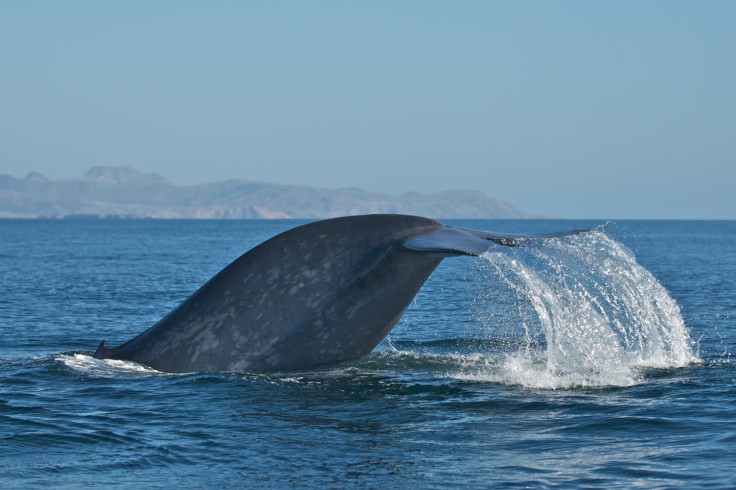Are Animals Left-Handed Or Right-Handed? Scientists Watch Ambidextrous Whales

Animals can be left-handed or right-handed just like humans, including the largest ones that have ever lived. But they can also be ambidextrous.
Scientists saw this dynamic in action while they were watching several dozen blue whales in the Pacific Ocean do barrel rolls to get food. Although there were animals that showed a preference for using their right side — the whale equivalent of right-handedness that we see in people — even those specific whales did left-handed barrel rolls on this one food-related behavior, according to a study in the journal Current Biology.
“When blue whales rise from the depths to approach a tasty krill patch near the surface, they perform 360-degree barrel rolls at a steep angle and nearly always roll to the left,” according to an explanation from Oregon State University.
Other types of movements in which the blue whales showed a preference for one side or the other included side rolls, in which they turn 90 degrees onto their sides to get at krill.
“We found many of them exclusively rolled to their right, fewer rolled just to their left, and the rest exhibited a combination,” researcher Ari Friedlaender said in the university statement.
Researchers have previously noted “right-side bias” in animals, which has been explained by the connection between the brain’s left hemisphere and the right eye — the left hemisphere is involved in motor skills and coordination, both of which are necessary in feeding movements.
In the case of the blue whales, that connection might also explain why they exclusively move to the left during barrel rolls, a behavior that makes otherwise right-handed whales ambidextrous. They could be doing it to “keep their right eye on the prey patch and maximize their effort,” Friedlaender said. “These are the largest animals on the planet and feeding is an extraordinarily costly behavior that takes time, so being able to maximize the benefit of each feeding opportunity is critical. And we believe this left-sided rotation is a mechanism to help achieve that.”
Further research is still needed, however, to fully understand the reason for handedness in blue whales, the largest animals ever known to inhabit the Earth.
“It is unclear,” the study says, “why whales predominantly show right-sided lateralized feeding behavior at depth, making it important for these findings to be compared across other populations of blue whales and other species of whale.”
© Copyright IBTimes 2025. All rights reserved.





















